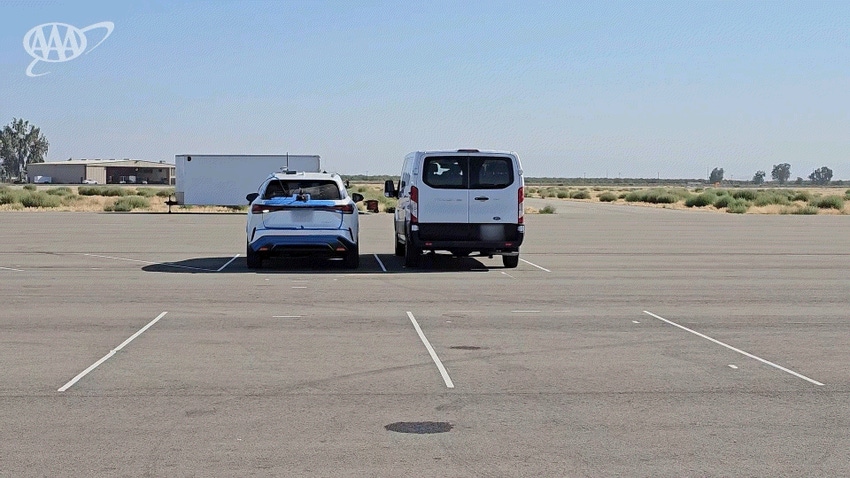How Effective Is Reverse Automatic Emergency Braking?
AAA engineers put automatic braking systems to the test and the results aren’t great.

Automatic Emergency Braking (AEB) systems have been found to be highly beneficial for reducing crashes in ideal circumstances, such as clear daylight with an unobstructed view. This is why the National Highway Traffic Safety Administration (NHTSA) plans to require AEB systems on all new cars in the future.
The agency says that universal AEB deployment could prevent as many as 24,000 collisions each year, saving 360 lives. Those successes will probably occur in good conditions.
But in tougher situations, unsurprisingly, AEBs struggle just as humans do, permitting more crashes in the dark and the rain. In AAA tests, AEB systems avoided crashing into stopped vehicles just 33 percent of the time in the rain.
AAA tests have also found that AEB is pretty effective at city driving speeds, but that at higher speeds, the systems are less successful avoiding crashes. And at night, the Insurance Institute for Highway Safety (IIHS) found that AEB prevented fewer than half of collisions with pedestrians.
So AAA decided to investigate the effectiveness of AEB systems in another tough spot: backing out of a parking space with an obstructed view of traffic crossing behind the car. They learned, unsurprisingly that there remains work to do in this area.
In testing where an adjacent parked vehicle blocked a clear view of cross traffic, AAA found that AEB systems applied the brakes 65 percent of the time. This resulted in a paltry 2.5 percent reduction in the number of collisions in the AAA tests. They also tested the systems with a stationary child positioned behind the car, and the AEB systems braked 75 percent of the time and avoided hitting the child half the time.
The vehicles used for the tests were a 2023 Hyundai Tucson Hybrid, a 2023 Lexus RX 350 Premium, a 2023 Mazda CX-30 2.5 Turbo AWD Premium Plus Package and a 2023 Volkswagen Tiguan 2.0T SEL R-Line. Compact SUVs were selected because of the popularity of vehicles in this category, according to AAA.
Considering the nearly complete failure of AEB systems to prevent a collision with cross traffic when backing out from a blind parking space, drivers must not think they can depend on the systems to avoid crashes. “Drivers should not solely rely on these advanced driving systems to prevent collisions, but instead use them to enhance their awareness of their surroundings and support safe driving,” said Greg Brannon, AAA’s director of automotive engineering.
The failure of the reverse AEB system also points to a need for continued improvement in the systems. “Vehicle testing requirements for these systems should be updated to be consistent, taking into consideration unusual objects and more realistic scenarios with the goal of achieving the greatest safety benefit to drivers, pedestrians and cyclists,” said Brannon.
Fortunately, the same sensors used by the AEB reverse systems also notify the driver of cross traffic, and with this information about cars they may not see, drivers can apply the brakes themselves to avoid crashes. Meanwhile, engineers working on AEB systems continue to have plenty of work to do.
About the Author(s)
You May Also Like





